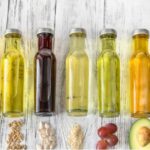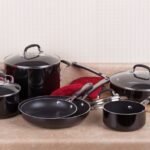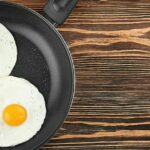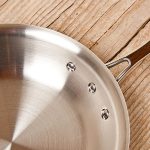Certain dishes require temperatures between 400 and 600 degrees Fahrenheit, usually at the beginning or end of cooking. High heat is typically used for browning meat, sautéing vegetables, deep-frying, and evaporating liquids to create a thick texture.
Cooking at high temperatures should not be the primary cooking method as too much heat can be harmful to health. High temperatures produce trans fats, which increase the risk of heart disease. However, using a high temperature for a reasonable period makes some foods crispier and more delicious.
If you are preparing a dish that requires high temperatures for some time, it is important to use cookware that can withstand high temperatures. Some types of cookware coatings may contain substances that give off toxic fumes at high temperatures. Using the wrong cookware can also make the food less tasty and damage the pan over time.
Cookware Materials that Can Handle High Heat
Cast Iron
Cast iron cookware can easily withstand high temperatures (up to 650°F) no matter what heat source you use. You can use a cast iron skillet for browning, searing, roasting, deep-frying, and baking. It is also safe to use on an open fire. Cast iron pans are ideal for cooking on the stove and then finishing dishes in the oven. Be sure to wear quality oven gloves when handling as cast iron gets very hot and retains heat longer than other cookware. Also use one of the high-heat oils for seasoning, so you can cook at high temperatures without destroying the seasoning layer.
This post contains links to Amazon. The publisher may get paid if You purchase something through the links without additional costs to You.
Lodge Cast Iron Skillet with Red Silicone Hot Handle Holder
Stainless Steel
For stainless steel cookware, the high-temperature tolerance depends on the quality of the material and ranges from 400°F to 800°F. However, most stainless steel cookware is designed to withstand temperatures up to 500°F. High-quality steel can withstand higher temperatures. When purchasing high-temperature stainless steel pans, look for cookware made from 304, 316, or 430 stainless steel. Also, look for the oven-safe symbol. Avoid stainless steel cookware with plastic or wooden handles as these pieces cannot withstand high oven temperatures.
To make a stainless steel pan more nonstick, always preheat the pan before adding oil.
All-Clad D3 3-Ply Stainless Steel Fry Pan
Carbon Steel
Carbon steel is 99% iron and 1% carbon. Carbon steel, like cast iron, can be used with a variety of heat sources, including an open flame or under the grill. Carbon steel skillets heat and cool faster than cast iron skillets. This makes them perfect for dishes that require cookware that responds very well to temperature fluctuations. Because carbon steel pans are lighter than cast iron pans, they are also easier to maneuver on the stove.
Carbon steel can withstand temperatures up to 750 degrees Fahrenheit, making it ideal for high-heat cooking techniques like browning.
Make sure to preheat your pan before adding food and never put cold food in a carbon steel pan to avoid thermal shock.
Merten & Storck Pre-Seasoned Carbon Steel 10″ Frying Pan
Enameled Cast Iron
Enameled Cast Iron has a porcelain coating bonded to a cast iron base. Unlike cast iron, which is susceptible to corrosion and reacts strongly to acidic ingredients, enameled cast iron is rust-proof and does not need to be seasoned. Like bare cast iron, enameled cast iron absorbs and retains heat well. Serve food from stove to table with these beautiful, colorful cookware pieces.
Most enameled cast iron cookware is oven-safe up to 500 degrees Fahrenheit. Some manufacturers advertise their enameled cookware for temperatures above 900 degrees Fahrenheit, but 500°F is more real and likely sufficient for most users’ needs. Before placing cookware in the oven, be aware that some Dutch ovens, pans, and pots may have handles, lids, or knobs that cannot withstand such high heat.
Can ceramic cookware withstand high heat?
100% pure ceramic cookware like Xtrema pans can withstand very high temperatures that you would never need for cooking. However, pure ceramic cookware is not a good conductor of heat and can be susceptible to thermal shock. This cookware became popular due to the lack of a metal base, which poses problems with leaching.
Ceramic-coated cookware is made of a type of metal (anodized aluminum or stainless steel) that is covered with a layer of ceramic. Ceramic non-stick coatings are typically made from material derived from sand. Most ceramic coatings can withstand heat up to 400-400 degrees Fahrenheit and are suitable for frying, roasting, and braising.
The heat resistance of a non-stick ceramic pan depends on the technology used in the manufacturing process. Older ceramic pans have a thin, short-lasting coating. No harmful fumes are released at temperatures above 500 F but the coating may degrade and its non-stick properties will be compromised.
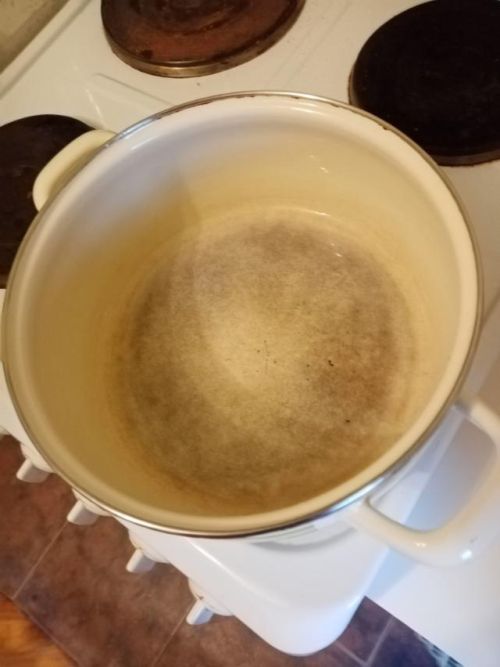
The newer and more expensive non-stick cookware has more layers of coating for longer durability and can withstand up to 600°F.
Some exemplars include
- Thermolon™ ceramic non-stick coating is manufactured using sol-gel technology. The mineral gel is sprayed onto the metal base and then fired at high temperatures to create a wear-resistant and heat-resistant surface.
- Blue Diamond cookware features a forged aluminum body and a diamond-infused Thermolon nonstick coating. These components promise excellent thermal conductivity and a durable non-stick coating. Blue Diamond Cookware Diamond Infused Ceramic Nonstick Frying Pan is advertised as oven and grill safe up to 600°F.
Can Non-Stick Pans Handle High Heat?
High-heat cooking in nonstick cookware should be avoided for two reasons. First, the higher temperatures can accelerate the degradation of the nonstick coating over time. Another reason is that some components of traditional nonstick coating can release potentially toxic fumes when exposed to very high temperatures.
The non-stick coating is suitable for low and medium-heat cooking. Low-heat cooking is also a good way to extend the life of your nonstick cookware.
What Cookware to Avoid for High Heat Cooking?
Some cookware is not suitable for cooking at high temperatures, including traditional nonstick pans. Teflon coatings may contain a chemical called perfluorooctanoic acid (PFOA), which was used to make Teflon until 2013. Older Teflon coatings break down at 500 degrees Celsius and release toxic fumes. Health risks associated with overheating Teflon include difficulty breathing, fever, and sore throat. Today, all Teflon products are PFOA-free, but some other substances in Teflon coating (PFAs) are not considered completely safe.
The Takeaway
If seasoning is your cup of tea, cast iron and carbon steel cookware are very reliable options for high-temperature cooking. If you prefer more attractive cookware or want to skip a seasoning step, enameled cast iron or high-quality ceramic-coated cookware are also acceptable choices for high-heat cooking methods.

